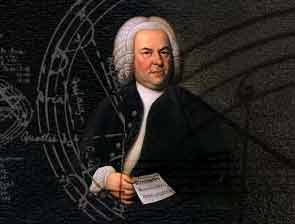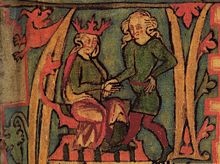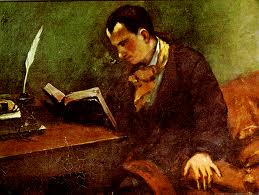
21st Century, Occasional Piece, Works
The idea for 4th Box of Maps first occurred to me while in Venice. The Basilica of San Marco is the obvious Venetian destination for a musician, and indeed it was inspiring to stand where Willaert and Gabrieli made their polychoral music over four centuries ago. I’m sure that reawakened my interest in site-specific antiphonal music.
More important to me, however, were certain things I noticed while wandering in that great labyrinth of a city. First, all Venice city maps are necessarily incomplete: The maze of streets and canals is too dense. To preserve legibility, a map must leave things out – sometimes up to a third of the streets in the city. Each map omits different streets, however, so you often find yourself in a place that doesn’t seem to exist, until you check another map. The implication is that there is a Platonic ideal of Venice, of which you can only catch glimpses. In addition, the topological changes around each corner (wide streets to narrow alleys, open piazza to confined courtyard, stone to water) produce changes in the ambient sound of the city. This is yet another, more subtle map, invisible but audible. As a result of all this, I had a curious sense of being simultaneously in several cities, all very similar but no two identical. Also, I became intensely aware that I was creating my own map – the map of my own journey, my own experience as I turned left instead of right, looked here but not there, or retraced my steps at a different time of day.
Venice changed my sense of place. I realized that every space and every time implies many maps, some not at all obvious. When I began to explore the Sanctuary of the Broadway Presbyterian Church, I found the variety of visual and acoustic perspectives highly suggestive. Though a concert is a communal event, each concertgoer creates his or her own map of their journey, listening from different vantage points, concentrating on different elements, experiencing different parts of the physical space, directing their attention to different people in the audience or onstage, and letting their mind wander at different times to different places.
Finally, I took inspiration from a short poem by Erica Jablon. In just a few lines, she touches so many of these ideas:
Pillars of leaves circle the rustling garden
White, they remember the moon’s theater
Remember the white stones
And the dark pool
The imagery evokes a particular place and time. But below the surface, the poem’s rhythm, internal correspondences, repetitions and almost-repetitions open up a complex and ambiguous world: maps within maps.
Occasional Piece, Romantic, Works
According to an old French superstition, Death appears at a graveyard at midnight on Halloween, “tunes” his violin (a very peculiar type of tuning), and calls forth the skeletons from their graves to dance – to their own type of waltz!
Saint-Saëns, who first performed this work in 1874, uses all sorts of unusual instrumental effects, including the xylophone and having the strings hit the wood of their bows on the strings (col legno) to conjure up the skeleton images. A cock-crow by the oboe heralds the dawn, when all of the revels cease and the skeletons return to their graves for another year.

Baroque, Occasional Piece, Works
The great Johann Sebastian Bach early on made his mark as a composer and performer on the organ. The D minor Toccata and Fugue is one of his earliest organ works, probably written between 1705 and 1708.
It has 2 main sections – an opening “toccata” (from the Italian “to touch”) with florid passagework and extensive improvisation, and a massive fugue made up of a 2-bar 16th-note theme repeated in various keys against a number of countersubjects.
Leopold Stokowski, the great American conductor, was so taken by the magnificence of this piece that he arranged it for a large orchestra. His arrangement highlights all sections of the orchestra – strings, high winds, low winds, brass – to give the original organ piece many different orchestral colors and sonorities (not to mention massive amounts of tonal volume!). The Stokowski arrangement is featured in the Disney movie Fantasia. Its famous opening theme has become a part of popular culture and been used in many films (horror and otherwise), as well as plays, videos and videogames.

20th Century, Occasional Piece, Works
Sir Peter Maxwell Davies (called “Max” by many of his friends) has long been one of Britain’s most respected composers. He was born in Manchester, England, and studied music at the University of Manchester and the Royal School of Music. After further study in the United States and Australia he returned to England where he created a virtuoso chamber group called The Fires of London to perform works by himself and his colleagues. For a time they were the rage in avant garde musical circles.
But Maxwell Davies was drawn increasingly to write music that was not only modern but that was communicative and accessible. You will see this reflected in his composition An Orkney Wedding, with Sunrise.
Composer’s Note:
“An Orkney Wedding was written for the Boston Pops Orchestra as a commission for its centenary, and conducted at the first performance by John Williams. It is a picture postcard record of an actual wedding I attended on Hoy in Orkney.
At the outset, we hear the guests arriving, out of extremely bad weather, at the hall. This is followed by the processional, where the guests are solemnly received by the bride and bridegroom, and presented with their first glass of whisky. The band tunes up, and we get on with the dancing proper. This becomes ever wilder, as all concerned feel the results of the whisky, until the lead fiddle can hardly hold the band together any more.
We leave the hall into the cold night with echoes of the processional music in our ears, and as we walk home across the island, the sun rises, over Caithness, to a glorious down. The sun is represented by the highland bagpipes, in full traditional splendor.”
21st Century, Occasional Piece, Works
World premiere of this work.

20th Century, Occasional Piece, Works
Voyage is a string-orchestral version of the choral setting of Richard Wilbur’s translation of Baudelaire’s “L’Invitation au Voyage.” The lyrical, seamless vocal lines translated themselves naturally to strings, and the burnished imagery of the poetry finds a happy companion in the richness of the instrumental choir.
Occasional Piece, Romantic, Works
Kodály, together with Bartok, was a major figure in the collection and analysis of Hungarian folk music.
Many of Kodály’s compositions are based on Hungarian folk tunes of various types. This is evident in the “Hungarian Rondo,” which Kodály wrote in 1917 and premiered in Vienna in early 1918. Originally titled “Old Hungarian Soldiers’ Songs,” its themes are based on the verbunkós, a type of army recruiting dance which utilized gypsy bands (symbolized here by strings, supplemented with raucous clarinets and bassoons).
The verbunkós typically had alternating slow-fast sections, with punctuating codas. In the Hungarian Rondo, Kodály follows through on this tradition by interspersing the opening slow string theme, in different instrumentations (solo violin, clarinet, mixed ensembles), with increasingly frenetic gypsy melodies.
20th Century, Occasional Piece, Works
Sousa reigned as the “March King” in the latter part of the 19th and early part of the 20th centuries. His musical output was prodigious, consisting of marches (well over 100), operettas, suites, songs, arrangements, etc. His “Belle of Chicago” march dates from 1892 and was meant as a tribute to the ladies of the Windy City.
20th Century, Occasional Piece, Works
Ives is one of America’s most intriguing composers. He began his musical studies under his father (a bandmaster), became an organist for a Connecticut church, and began composing around the turn of the 20th century. After graduating in 1908 from Yale University, Ives went into a successful career in the insurance business, but continued his composing activities.
Widely ignored until the end of his life, Ives is now an established American composer. His style is pioneering and eclectic, and runs the gamut from beautiful melody to wild dissonances and polyrhythms.
He wrote his original version of The Unanswered Question around 1906, and revised it between 1930 and 1935. The work is scored for strings, solo trumpet and wind choir (2 flutes, oboe, and clarinet).
While the strings play a slow soft chorale, the solo trumpet asks a series of “questions.” Each time, the wind quartet answers the trumpet. While the first “answers” are slow, they rapidly increase in intensity, tempo and urgency. After a final shrill burst from the winds, the trumpet repeats the question, letting it hang in the air until the end of the piece.
20th Century, Occasional Piece, Works
This short piece can perhaps best be described as an impressionist miniature jewel, more evocative of mood than anything else. Curiously, the title has no particular significance; Ravel used it because he liked the sound of it.
The Pavane opens with a soaring theme played by the French Horn, picked up later by the winds and finally the muted strings. A contrasting middle section introduced by the flute separates the main thematic material. Impressionist harmonies, muted strings and harp glissandi all combine to evoke shifting moods – first stately and somber, then urgent and lively, and (at the end) wistful and introspective.




